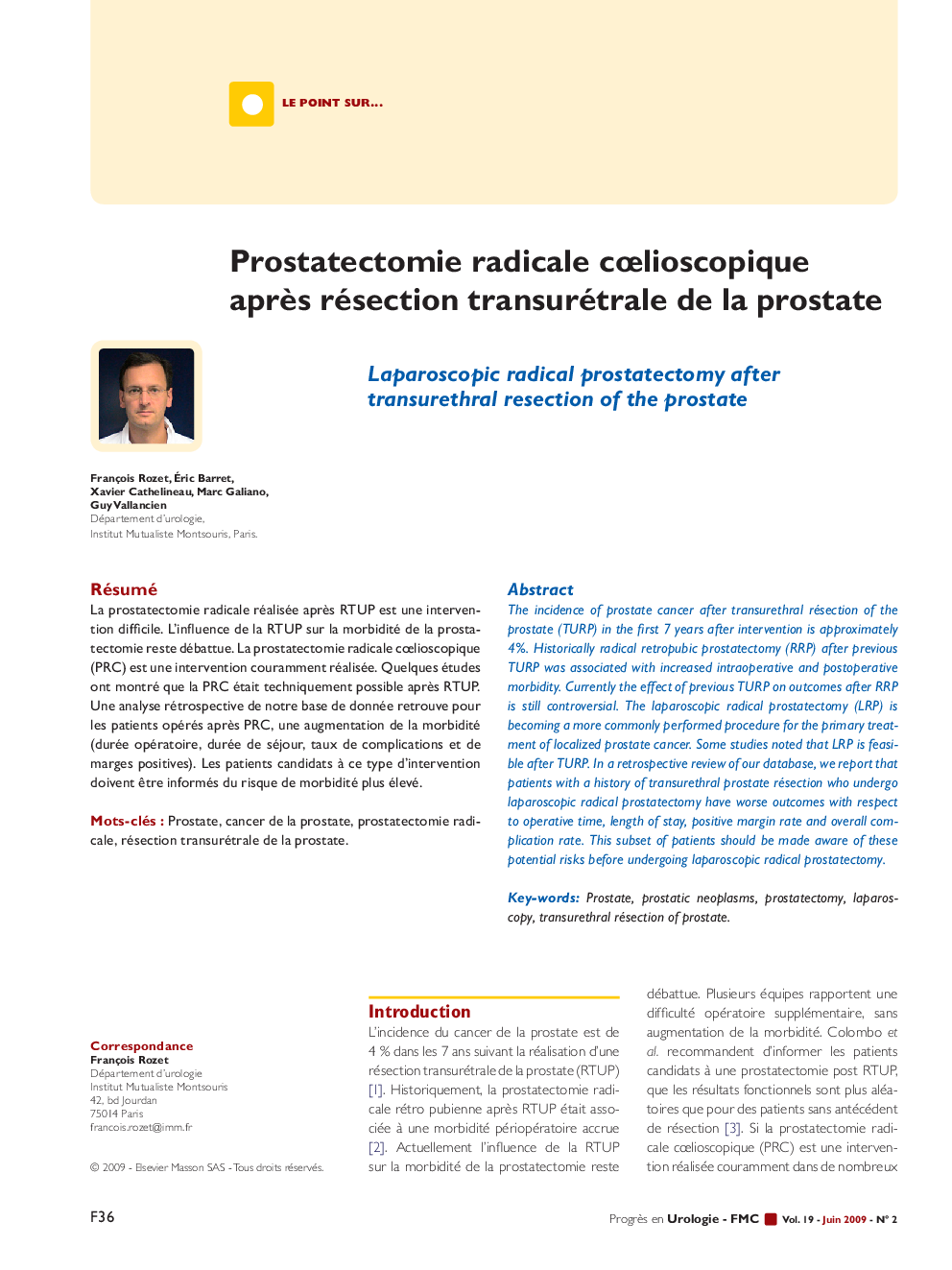| Article ID | Journal | Published Year | Pages | File Type |
|---|---|---|---|---|
| 4274014 | Progrès en Urologie - FMC | 2009 | 4 Pages |
RésuméLa prostatectomie radicale réalisée après RTUP est une intervention difficile. L’influence de la RTUP sur la morbidité de la prostatectomie reste débattue. La prostatectomie radicale cœlioscopique (PRC) est une intervention couramment réalisée. Quelques études ont montré que la PRC était techniquement possible après RTUP. Une analyse rétrospective de notre base de donnée retrouve pour les patients opérés après PRC, une augmentation de la morbidité (durée opératoire, durée de séjour, taux de complications et de marges positives). Les patients candidats à ce type d’intervention doivent être informés du risque de morbidité plus élevé.
The incidence of prostate cancer after transurethral résection of the prostate (TURP) in the first 7 years after intervention is approximately 4 %. Historically radical retropubic prostatectomy (RRP) after previous TURP was associated with increased intraoperative and postoperative morbidity. Currently the effect of previous TURP on outcomes after RRP is still controversial. The laparoscopic radical prostatectomy (LRP) is becoming a more commonly performed procedure for the primary treatment of localized prostate cancer. Some studies noted that LRP is feasible after TURP. In a retrospective review of our database, we report that patients with a history of transurethral prostate résection who undergo laparoscopic radical prostatectomy have worse outcomes with respect to operative time, length of stay, positive margin rate and overall complication rate. This subset of patients should be made aware of these potential risks before undergoing laparoscopic radical prostatectomy.
